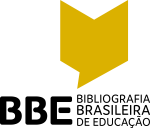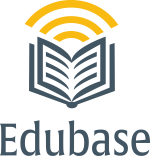EDUPORTFOLIO: A TOOL FOR SECOND LANGUAGE TEACHERS
DOI:
https://doi.org/10.7213/rde.v10i31.2431Abstract
Originally used in artistic circles, the portfolio has gained considerable ground in the education field, where it serves a multitude of functions, both academic and professional. It is also a rapidly evolving tool, notably due to advances in Web 2.0 technology that have opened the way to new pedagogical potentials. The portfolio is also prominent in second-language teaching and learning programs, as witnessed by the European Language Portfolio (ELP), which was developed and piloted by the Council of Europe and is used as a support tool in line with the ISSN 1518-3483 Licenciado sob uma Licença Creative Commons Rev. Diálogo Educ., Curitiba, v. 10, n. 31, p. 581-592, set./dez. 2010 582 KARSENTI, T.; COLLIN, S. Rev. Diálogo Educ., Curitiba, v. 10, n. 31, p. 581-592, set./dez. 2010 Common European Framework of Reference for Languages (CEFR). In this context, we present Eduportfolio, a flexible electronic portfolio that can be adapted to a variety of educational contexts, including second language (L2) education. We draw a portrait of the portfolio in education, including the advantages of the electronic version. We then present Eduportfolio along with some empirical results to illustrate eportfolio use in French second language (FSL) teaching and learning.Downloads
References
ANIS, J. Texte et ordinateur. L’écriture réinventée? Paris/Brussels: De Beck université, 1998.
BELANOFF, P.; DICKINSON, M. Portfolios: process and product. Portsmouth, NH: Heinemann, 1991.
BRÄUER, G. Le Portfolio, moyen d’apprentissage et d’enseignement personnalisés. Tracer, v. 15, p. 31-46, 1999.
BUCHETON, D. Du portfolio au dossier professionnel: éléments de reflexiona, 2003. Disponível em: <http://probo.free.fr/textes_amis/portfolio_bucheton.
pdf>. Acesso em: 20 mar. 2010.
COUNCIL OF EUROPE. European language portfolio (ELP): principies and guidelines. Strasbourg: Author, 2004.
EYSSAUTIER-BAVAY, C. Le portfolio en éducation: concepts et usages. In:COLLOQUE TICE MÉDITERRANNÉE, 1., 2004, Nice, France. Proceedings… Nice, France: ISDM, 2004. p. 265-271.
GOUPIL, G., PETIT, E-L.; PALLASCIO, M-C. Le Portfolio: un pas ver une évaluation plus “authentique” orientée vers l’acquisition de compétences. Revue Québécoise de Psychologie, v. 19, n. 2, p. 167-181, 1998.
GRESSO, H.; LOMICKA, L. Le portfolio: une méthode active, construtivo, réflective. Tracer, v. 15, p. 23-30, 1999.
LITTLE, D. The common european framework and the european language portfolio: involving learners and their judgments in the assessment process. Language Testing, v. 22, n. 3, p. 321-336, 2005.
LITTLE, D.; PERCLOVÁ, R. The european language portfolio: a guide for teachers and teacher trainers. Disponível em: <http://www.coe.int/T/DG4/Portfolio/documents/ELPguide_teacherstrainers.pdf>. Acesso em: 20 maio 2010.
MINUTH, C. Écrire pour construire une réflexion sur les apprentissages. Trazer, v. 15, p. 11-22, 1999.
Downloads
Published
How to Cite
Issue
Section
License
O(s) autor(es) transfere(m), por meio de cessão, à EDITORA UNIVERSITÁRIA CHAMPAGNAT, pessoa jurídica de direito privado, inscrita no CNPJ/MF sob o n.º 76.659.820/0009-09, estabelecida na Rua Imaculada Conceição, n.º 1155, Prado Velho, CEP 80.215-901, na cidade de Curitiba/PR, os direitos abaixo especificados e se compromete a cumprir o que segue:
- Os autores afirmam que a obra/material é de sua autoria e assumem integral responsabilidade diante de terceiros, quer de natureza moral ou patrimonial, em razão de seu conteúdo, declarando, desde já, que a obra/material a ser entregue é original e não infringe quaisquer direitos de propriedade intelectual de terceiros.
- Os autores concordam em ceder de forma plena, total e definitiva os direitos patrimoniais da obra/material à EDITORA UNIVERSITÁRIA CHAMPAGNAT, a título gratuito e em caráter de exclusividade.
- A CESSIONÁRIA empregará a obra/material da forma como melhor lhe convier, de forma impressa e/ou on line, inclusive no site do periódico da EDITORA UNIVERSITÁRIA CHAMPAGNAT, podendo utilizar, fruir e dispor do mesmo, no todo ou em parte, para:
- Autorizar sua utilização por terceiros, como parte integrante de outras obras.
- Editar, gravar e imprimir, quantas vezes forem necessárias.
- Reproduzir em quantidades que julgar necessária, de forma tangível e intangível.
- Adaptar, modificar, condensar, resumir, reduzir, compilar, ampliar, alterar, mixar com outros conteúdos, incluir imagens, gráficos, objetos digitais, infográficos e hyperlinks, ilustrar, diagramar, fracionar, atualizar e realizar quaisquer outras transformações, sendo necessária a participação ou autorização expressa dos autores.
- Traduzir para qualquer idioma.
- Incluir em fonograma ou produção audiovisual.
- Distribuir.
- Distribuir mediante cabo, fibra ótica, satélite, ondas ou qualquer outro sistema que permite ao usuário realizar a seleção da obra ou produção para recebê-la em tempo e lugar previamente determinados por quem formula a demanda e nos casos em que o acesso às obras ou produções se faça por qualquer sistema que importe em pagamento pelo usuário.
- Incluir e armazenar em banco de dados, físico, digital ou virtual, inclusive nuvem.
- Comunicar direta e/ou indiretamente ao público.
- Incluir em base de dados, arquivar em formato impresso, armazenar em computador, inclusive em sistema de nuvem, microfilmar e as demais formas de arquivamento do gênero;
- Comercializar, divulgar, veicular, publicar etc.
- Quaisquer outras modalidades de utilização existentes ou que venham a ser inventadas.
- Os autores concordam em conceder a cessão dos direitos da primeira publicação (ineditismo) à revista, licenciada sob a CREATIVE COMMONS ATTRIBUTION LICENSE, que permite o compartilhamento do trabalho com reconhecimento da autoria.
- Os autores autorizam a reprodução e a citação de seu trabalho em repositórios institucionais, página pessoal, trabalhos científicos, dentre outros, desde que a fonte seja citada.
- A presente cessão é válida para todo o território nacional e para o exterior.
- Este termo entra em vigor na data de sua assinatura e é firmado pelas partes em caráter irrevogável e irretratável, obrigando definitivamente as partes e seus sucessores a qualquer título.
- O não aceite do artigo, pela EDITORA UNIVERSITÁRIA CHAMPAGNAT, tornará automaticamente sem efeito a presente declaração.












